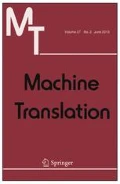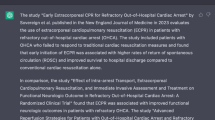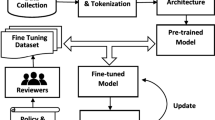Abstract
We conducted a field trial in computer-assisted professional translation to compare interactive translation prediction (ITP) against conventional post-editing (PE) of machine translation (MT) output. In contrast to the conventional PE set-up, where an MT system first produces a static translation hypothesis that is then edited by a professional (hence “post-editing”), ITP constantly updates the translation hypothesis in real time in response to user edits. Our study involved nine professional translators and four reviewers working with the web-based CasMaCat workbench. Various new interactive features aiming to assist the post-editor/translator were also tested in this trial. Our results show that even with little training, ITP can be as productive as conventional PE in terms of the total time required to produce the final translation. Moreover, translation editors working with ITP require fewer key strokes to arrive at the final version of their translation.






Similar content being viewed by others
Notes
In anticipation of the discussion of the CasMaCat field trial in Sect. 4, we should also point out that editing is different from reviewing, in which a third party reviews and revises the text produced by the initial editor for quality assurance.
In our experiments, we use an EyeLink1000 eye tracker.
Outliers are defined here as those points that exceed \(Q3+1.5\) times the inter-quartile range, cf. Montgomery (2004).
For a detailed introduction to this kind of analysis, see e.g. Montgomery (2004).
References
Alabau V, Leiva LA, Ortiz-Martínez D, Casacuberta F (2012) User evaluation of interactive machine translation systems. In: Proceedings of the 16th Annual Conference of the European Association for Machine Translation, pp 20–23
Alabau V, Buck C, Carl M, Casacuberta F, García-Martínez M, Germann U, González-Rubio J, Hill R, Koehn P, Leiva L, Mesa-Lao B, Ortiz-Martínez D, Saint-Amand H, Sanchis-Trilles G, Tsoukala C (2014) Casmacat: A computer-assisted translation workbench. In: Proceedings of the 14th Conference of the European Chapter of the Association for Computational Linguistics, pp 25–28
Alves F, Vale D (2009) Probing the unit of translation in time: aspects of the design and development of a web application for storing, annotating, and querying translation process data. Across Lang Cultures 10(2):251–273
Bach N, Huang F, Al-Onaizan Y (2011) Goodness: A method for measuring machine translation confidence. In: Proceedings of the Annual Meeting of the Association for Computational Linguistics, pp 211–219
Barrachina S, Bender O, Casacuberta F, Civera J, Cubel E, Khadivi S, Lagarda AL, Ney H, Tomás J, Vidal E, Vilar JM (2009) Statistical approaches to computer-assisted translation. Comput Linguist 35(1):3–28
Brown PF, Della Pietra SA, Della Pietra VJ (1993) The mathematics of statistical machine translation: parameter estimation. Comput Linguist 19(2):263–311
Callison-Burch C, Koehn P, Monz C, Post M, Soricut R, Specia L (2012) Findings of the 2012 workshop on statistical machine translation. In: Proceedings of the Seventh Workshop on Statistical Machine Translation, pp 10–51
Carl M (2012a) The CRITT TPR-DB 1.0: A database for empirical human translation process research. In: Proceedings of the AMTA 2012 Workshop on Post-Editing Technology and Practice, pp 1–10
Carl M (2012b) Translog-II: a program for recording user activity data for empirical reading and writing research. In: Proceedings of the Eighth International Conference on Language Resources and Evaluation, pp 4108–4112
Carl M (2014) Produkt- und Prozesseinheiten in der CRITT Translation Process Research Database. In: Ahrens B (ed) Translationswissenschaftliches Kolloquium III: Beiträge zur Übersetzungs- und Dolmetschwissenschaft (Köln/Germersheim). Peter Lang, Frankfurt am Main, pp 247–266
Carl M, Kay M (2011) Gazing and typing activities during translation : a comparative study of translation units of professional and student translators. Meta 56(4):952–975
Doherty S, O’Brien S, Carl M (2010) Eye tracking as an MT evaluation technique. Mach Transl 24(1):1–13
Elming J, Carl M, Balling LW (2014) Investigating user behaviour in post-editing and translation using the Casmacat workbench. In: O’Brien S, Winther Balling L, Carl M, Simard M, Specia L (eds) Post-editing of machine translation: processes and applications. Cambridge Scholar Publishing, Newcastle upon Tyne, pp 147–169
Federico M, Cattelan A, Trombetti M (2012) Measuring user productivity in machine translation enhanced computer assisted translation. In: Proceedings of the Tenth Biennial Conference of the Association for Machine Translation in the Americas
Flournoy R, Duran C (2009) Machine translation and document localization at adobe: From pilot to production. In: Proceedings of MT Summit XII
Green S, Heer J, Manning CD (2013) The efficacy of human post-editing for language translation. In: Proceedings of SIGCHI Conference on Human Factors in Computing Systems, pp 439–448
Guerberof A (2009) Productivity and quality in mt post-editing. In: Proceedings of MT Summit XII-Workshop: Beyond Translation Memories: New Tools for Translators MT
Guerberof A (2012) Productivity and quality in the post-editing of outputs from translation memories and machine translation. Ph.D. Thesis
Just MA, Carpenter PA (1980) A theory of reading: from eye fixations to comprehension. Psychol Rev 87(4):329
Koehn P (2009a) A process study of computer-aided translation. Mach Transl 23(4):241–263
Koehn P (2009b) A web-based interactive computer aided translation tool. In: Proceedings of ACL-IJCNLP 2009 Software Demonstrations, pp 17–20
Krings HP (2001) Repairing texts: empirical investigations of machine translation post-editing processes, vol 5. Kent State University Press, Kent
Lacruz I, Shreve GM, Angelone E (2012) Average pause ratio as an indicator of cognitive effort in post-editing: a case study. In: Proceedings of the AMTA 2012 Workshop on Post-Editing Technology and Practice, pp 21–30
Langlais P, Foster G, Lapalme G (2000) Transtype: A computer-aided translation typing system. In: Proceedings of the 2000 NAACL-ANLP Workshop on Embedded Machine Translation Systems, pp 46–51
Leiva LA, Alabau V, Vidal E (2013) Error-proof, high-performance, and context-aware gestures for interactive text edition. In: Proceedings of the 2013 annual conference extended abstracts on Human factors in computing systems, pp 1227–1232
Montgomery D (2004) Introduction to statistical quality control. Wiley, Hoboken
O’Brien S (2009) Eye tracking in translation process research: methodological challenges and solutions, Copenhagen Studies in Language, vol 38. Samfundslitteratur, Copenhagen, pp 251–266
Ortiz-Martínez D, Casacuberta F (2014) The new Thot toolkit for fully automatic and interactive statistical machine translation. In: Proceedings of the 14th Annual Meeting of the European Association for Computational Linguistics: System Demonstrations, pp 45–48
Plitt M, Masselot F (2010) A productivity test of statistical machine translation post-editing in a typical localisation context. Prague Bulletin Math Linguist 93(1):7–16
Sanchis-Trilles G, Ortiz-Martínez D, Civera J, Casacuberta F, Vidal E, Hoang H (2008) Improving interactive machine translation via mouse actions. In: Proceedings of the Conference on Empirical Methods in Natural Language Processing, pp 485–494
Simard M, Foster G (2013) Pepr: Post-edit propagation using phrase-based statistical machine translation. In: Proceedings of MT Summit XIV, pp 191–198
Skadiņš R, Puriņš M, Skadiņa I, Vasiļjevs A (2011) Evaluation of SMT in localization to under-resourced inflected language. In: Proceedings of the 15th International Conference of the European Association for Machine Translation, pp 35–40
Acknowledgments
This work was supported by the European Union’s 7th Framework Programme (FP7/2007–2013) under grant agreement No 287576 (CasMaCat ).
Author information
Authors and Affiliations
Corresponding author
Rights and permissions
About this article
Cite this article
Sanchis-Trilles, G., Alabau, V., Buck, C. et al. Interactive translation prediction versus conventional post-editing in practice: a study with the CasMaCat workbench. Machine Translation 28, 217–235 (2014). https://doi.org/10.1007/s10590-014-9157-9
Received:
Accepted:
Published:
Issue Date:
DOI: https://doi.org/10.1007/s10590-014-9157-9




